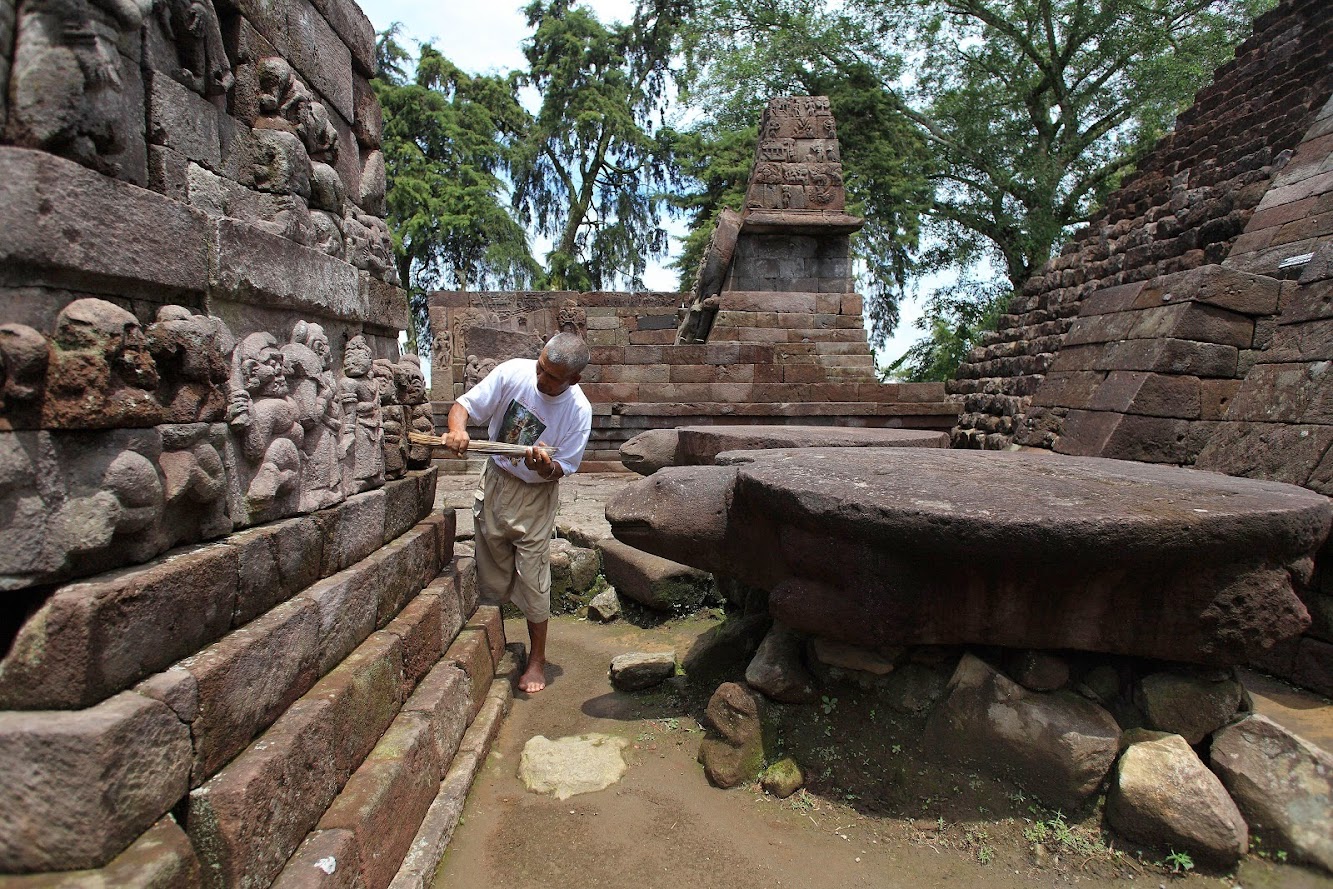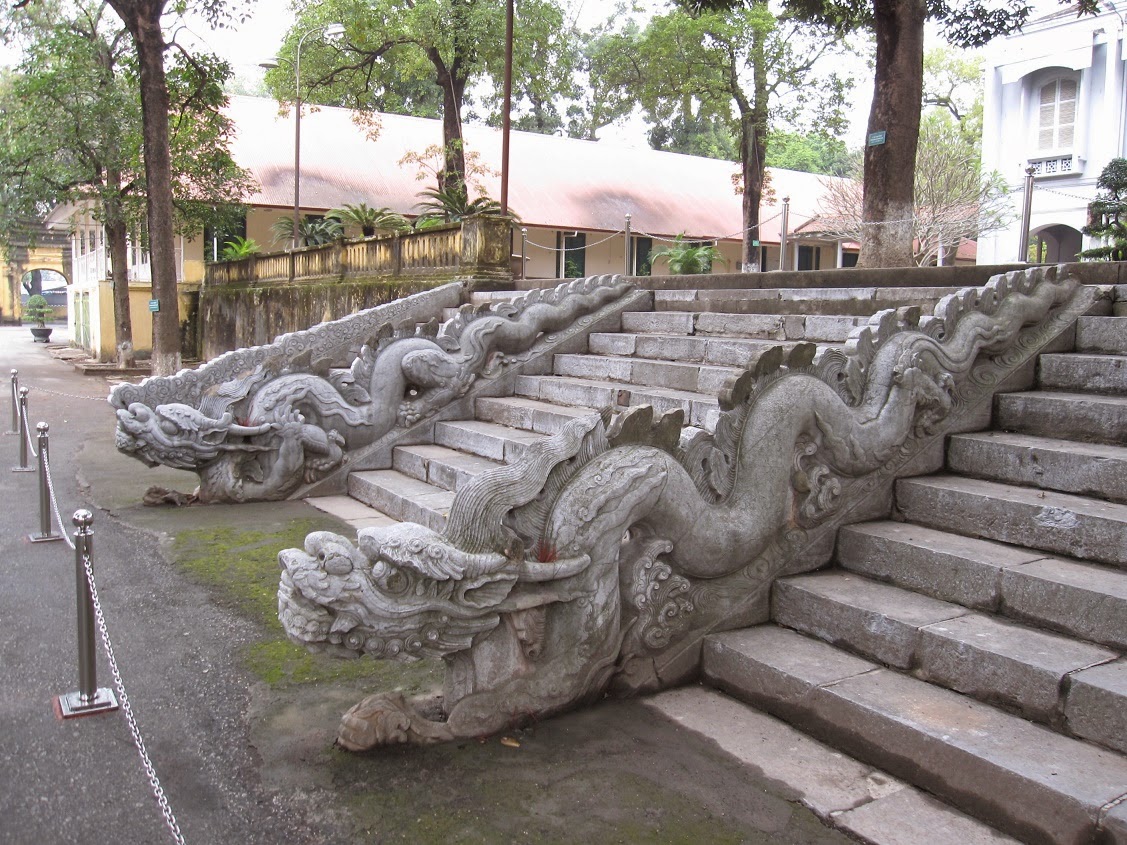
[Credit: Antara Photo/Maulana Surya]
Some parts of the exotic temple complex will remain open to tourists during the renovations, but not the main pyramid-shaped structure.
The agency estimates that the renovation will be completed in 2016.
Before work can start, however, the agency and a team of archeologists will remove some stones from the pyramid to study the best method to stop the main temple from further damage.
The pyramid is now bulging on one side and could threaten the integrity of the entire structure.
The first stage of restoration is estimated to cost around Rp 1 billion ($79,000).
“Restoration was proposed last year as the temple’s foundation has continued to shift every year, making the pyramid lopsided,” the agency spokesman Wahyu Kristanto said.
The agency has also limited the number of tourists entering the pyramid on fears that overcrowding will trigger the foundations to collapse.
Wahyu said the pyramid’s structure is fragile as it is composed of rudimentary carved rocks held together with soil and clay, which is different from the Borobudur and Prambanan temples, which are made entirely out of stone.
Sukuh temple is located in Ngargoyoso on the slopes of Mount Lawu, around 1,186 meters above sea level. It was built at the end of the Majapahit Kingdom in the 15th century and “rediscovered” in the 19th century by British voyager Thomas Raffles.
The temple’s architecture is unusual as its main building resembles pyramids of Egypt and Mesoamerican civilizations.
Author: Ari Susanto | Source: Jakarta Globe [January 30, 2015]














